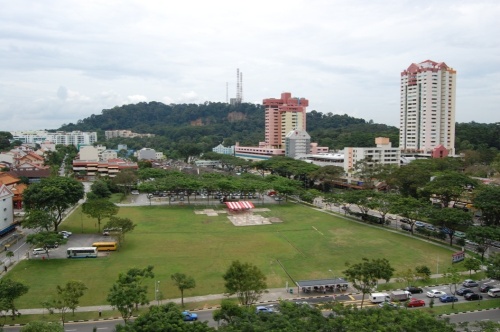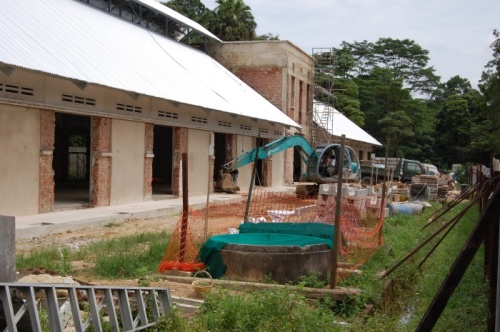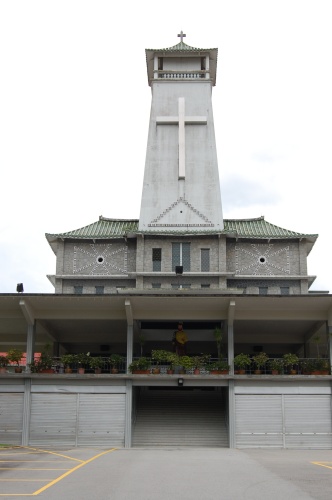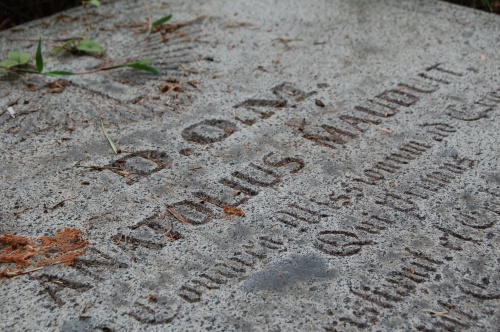I have been based at the National University of Singapore since April, but had waited until now to visit Bukit Timah: waiting for the expedition to officially get underway; and waiting for our expedition photographer, Platon Theodoris, to make his way to Singapore.
It would be easy to dismiss the Bukit Timah Nature Reserve as a tiny, fragmented park and decry the present and past governments of Singapore for their short-sightedness in allowing the wanton destruction of Singapore’s natural heritage. Of particular frustration to many conservationists in Singapore was the construction of the 6-lane Bukit Timah Expressway in 1985, effectively cutting the reserve off from the Central Catchment Nature Reserve, and creating an ecological island in Bukit Timah. However, I find it equally astonishing that a place like Bukit Timah still exists at all in Singapore. Yes, it’s true that the reserve is neatly framed on all sides by high-density urban development, and that two massive disused granite quarries scar the hill face, and that the summit is used as a telecommunications station. But, some impressive unlogged stands of Dipterocarps (Shorea, Dipterocarpus, Vatica and Shorea species) are amazingly still found in the reserve, and the amateur butterfly watcher (armed with a brand new copy of ‘A Field Guide to the Butterflies of Singapore’) was able to spot amongst other, an Archduke (Lexias paradalis dirteana), a common tree nymph (Idea stolli logani), and a Common Rose (Pachliopta aristolochiae, or perhaps its evolutionary mimic Papilio polytes romulus that so interested Wallace during his later travels in Sumatra).
 |
|
View towards Bukit Timah hill, the highest point on Singapore Island |
It is, however, hard to imagine the reserve providing habitat to tigers, killing, so our esteemed hero tells us “on average a Chinaman every day’. (Indeed, Wallace’s hyperbolic statement should probably be treated with caution, even in 1854.) The last Singapore tiger is believed to have been shot in the 1930s, and the mammals remaining in Bukit Timah include the ubiquitous long-tailed macaque, various squirrels, the so-called flying lemur (not actually a lemur and properly called a Malayan Colugo), the Malayan pangolin, and the lesser mouse-deer. A new biological inventory of the park has just commenced (the first conducted since 1996), and it is with some trepidation that scientists await the findings. All the while, the debate continues over the possible reintroduction of locally extinct species into the park that would allow restoration of some ecological processes, but would be unlikely to maintain viable populations in the long term.
After dodging the numerous urban joggers and exercise groups ploughing their way to the summit on my first to Bukit Timah, I made an appointment with Senior Conservation Officer, Teo Sunia, who offered to show us around the, currently under construction, Wallace Environmental Education Centre. On the northern boundary of the reserve, the National Parks Board of Singapore is actively replanting a disused dairy farm with native species from the park. The old dairy farm hut is being renovated to accommodate an education centre and exhibition hall showcasing the history of the reserve site, including a proposed tribute to the work of Wallace. Teo explained that the opening of the new centre was planned to coincide with the International Day for Biological Diversity on 22 May, 2009. Certainly, the memory of Wallace’s time at Bukit Timah was lingering on at the reserve, and also features in the exhibition hall at the main visitor’s centre on Hindhede Drive.
 |
|
New Wallace Education Centre under construction at Bukit Timah |
What of the French Jesuit mission where Wallace stayed for two months in 1852 after first arriving in the east? St Josephs Church and the Boys’ Town English School are located on the Northwest fringe of the reserve, and this is almost certainly where Wallace stayed during his collecting visits at Bukit Timah. This is where Wallace was so impressed with the generosity and sincerity of his ‘mission friend’, 'truly a a father to his flock'. St Josephs was established by Father Anatole Maudit in 1846 for the ‘jungle Chinese’ then establishing pepper and gambier plantations in the island’s interior. In ‘The Malay Archipelago’, Wallace does not mention by name his missionary friend. However, his family letters make reference to the French missionary just arriving back from Tonquin, which suggests that his host was indeed Anatole Maudit, whose grave is still found in the cemetery at the rear of the church.
 |
|
St. Josephs Church, Bukit Timah, on the mission site where Wallace stayed for 2 months in 1854. |
“Alfred who?” was the response of Father Edmond Chong when I inquired about the famous naturalist who had once spent time enjoying the ‘exceeding productiveness’ of Bukit Timah. I then decided it diplomatic to put aside a discussion of Wallace’s innovative contribution to evolutionary theory for another day with Father Chong, and returned to scale the local public housing block to gain an aerial view of the reserve.
 |
|
Tomb stone at the grave of Father Anatolius Maudit beyond St. Josephs Church, Wallace's 'missionary friend' |
All photos in Singapore by Platon Theodoris.

Add new comment